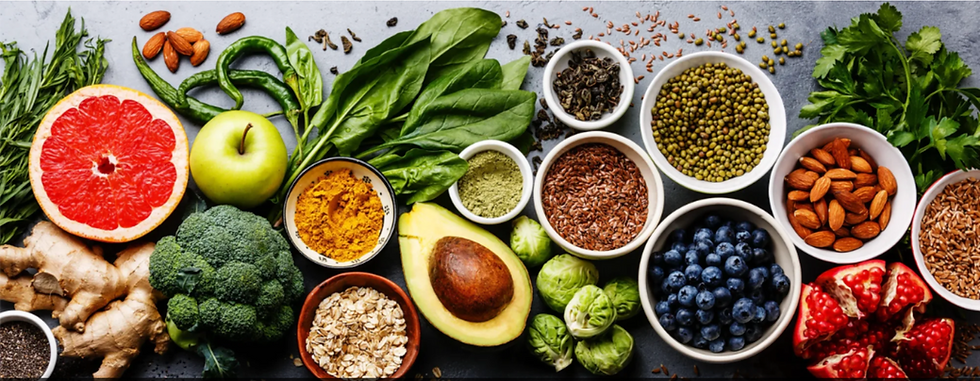Nature's Perfect Spring Cleanse

It dawned on me the other day that we should be celebrating the new year right about now. The lunar new year is always celebrated around Feb/March (end of winter in the northern hemisphere), so really, right now, down here in the southern hemisphere, is our own opportunity to start fresh. There's a lot going on environmentally (the macrocosm) and in the body (the microcosm) that lends itself to new beginnings. The ground is thawing, the days are getting longer and warmer and seeds are sprouting. Seeds of 'ideas' and 'dreams' and 'change' can also begin to sprout if thoughtfully cultivated, they'll grow into something grand.
In the ancient traditional medicine of the east, late winter to early spring is characterised by an excess or imbalance (dosha) of the elements of earth & water ( 'kapha'), which shows up as a heavy, slow, still, and possibly stagnant state (kind of mud-like qualities, due to a relative absence of fire and air). On one hand, it's a great time for staying home and contemplating life, but we might also have a sense of needing to break free, move and rise above it all like a little sprout reaching up out of the dirt towards the sun, full of potential and possibilities. Don't you feel like that? So with that in mind we can consider establishing some new habits and routines to optimise growth... starting with throwing off the covers, and cleaning out the cobwebs, so to speak. On the last day of August, Sharyn Crawford of Dunedin and I hosted a handful of locals at Te Whare Mahana for a day retreat of yoga, qigong, aromatherapy and Ayurveda all aligned and designed to get us off to a clean and dream-inspired (or goal-inspired) spring.
Naturally, nature provides perfect nutrition in what is available locally and seasonally. Admittedly not that much right now in the immediate area, even for the best of our foragers, but if we avoid consuming food that's been imported from too far away, we will likely end up eating those foods and 'tastes' most needed to balance kapha, to melt away excess of earth and water elements, and they happen to be foods with bitter, pungent and astringent tastes, Doesn't sound too flash, does it? But if you're game, you can try favoring these tastes in food for the month or so and reduce sweet, sour and salty foods. (Save the sweet and sour indulgences for summer and salty for autumn and early winter soups etc.)

Why these tastes (bitter, astringent & pungent) are perfect for this time of year (and the others not so much) is outlined below, plus examples of foods to 'favor' at this time of year to help naturally cleanse and detoxify the body, in particular to support the liver and kidneys, with foods and spices that are warming and invigorating, like turmeric and ginger. The spring harvest is low fat and low calorie so that's what we can eat abundantly to be in synch with nature. Consuming spring harvest foods helps to melt kapha excess; Ama (toxins) are released from stagnation, and anything else we can do to purify and purge the body is also welcome, such as tongue scraping (I do this daily year round), avoiding snacks or random isolated 'mouthfuls' of food and reducing fat intake (fats are favored in autumn).
Pungent taste: Balances kapha by being hot, dry, and stimulating, helping to warm the body, improve digestion, and clear excess mucus.
Spices: Black pepper, ginger, garlic, mustard seeds, chili peppers
Vegetables: Radishes, onions, turnips, arugula, watercress
Bitter taste: Light and dry, this taste reduces moisture and congestion, promotes digestion, and aids in fat reduction.
Spices: Fenugreek, turmeric, neem
Vegetables: Bitter gourd (bitter melon), kale, dandelion greens, spinach, endive
Fruits: Cranberries, grapefruit, green grapes
Astringent taste: Drying and cleansing, it removes excess moisture, tones tissues, and reduces fat.
Spices: Turmeric, coriander, bay leaf
Fruits: Pomegranate, unripe bananas, apples, pears
Vegetables: Broccoli, cauliflower, Brussels sprouts, artichokes, green beans
Grains: Quinoa, barley, rye
On the other hand, tastes that aggravate kapha include:
Sweet taste: It is heavy, oily, and moist, which can lead to weight gain, sluggish digestion, and excess mucus.
Sour taste: Moist and oily, it can cause water retention, congestion, and overeating.
Salty taste: Moistening and heavy, it can lead to swelling, water retention, and cravings.
Salads are naturally light and drying, so you can start to bring them back into your diet more (assuming you've been tending not to eat that much salad over winter). In view of the need to eat less fat in early Spring, try adding one of these taste-filled salad boosters to your salads instead of salad dressing. Make a jar full and store it in your fridge. We had both of these last Saturday at the Whare and the walnut one was the favorite. Feel free to skip an ingredient or replace it with something else that might work.
Sunflower-Lime Salad Booster
1/3 cup sunflower seeds
5 pitted dates or 1/3 cup dried cranberries
½ teaspoon lime zest
1 teaspoon Nutritional Yeast (optional)
¼ teaspoon red chili flakes (optional)
Curry Walnut Salad Booster
½ cup raw walnuts
3 tablespoons white raisins (or any raisins)
¼ teaspoon turmeric
½ teaspoon curry powder
2 teaspoons ginger root, freshly grated
1/8 teaspoon unrefined sea salt
Directions for Making either Salad Booster:
1. Process the first 3 ingredients in a high speed blender or mini-food processor.
2. Add the remaining ingredients and process again until the mixture is crumbly and moist. Add a little water if you want a more saucy texture.
Sprinkle a few tablespoons on top of your salad. Save the rest in a zip-top bag and store in the freezer.
We'll be diving deeper into seasonal eating, mindful moving and enlightened growth at this next retreat, a weekend at Isolation Bay Lake Tekapo, NZ.
!














Comments